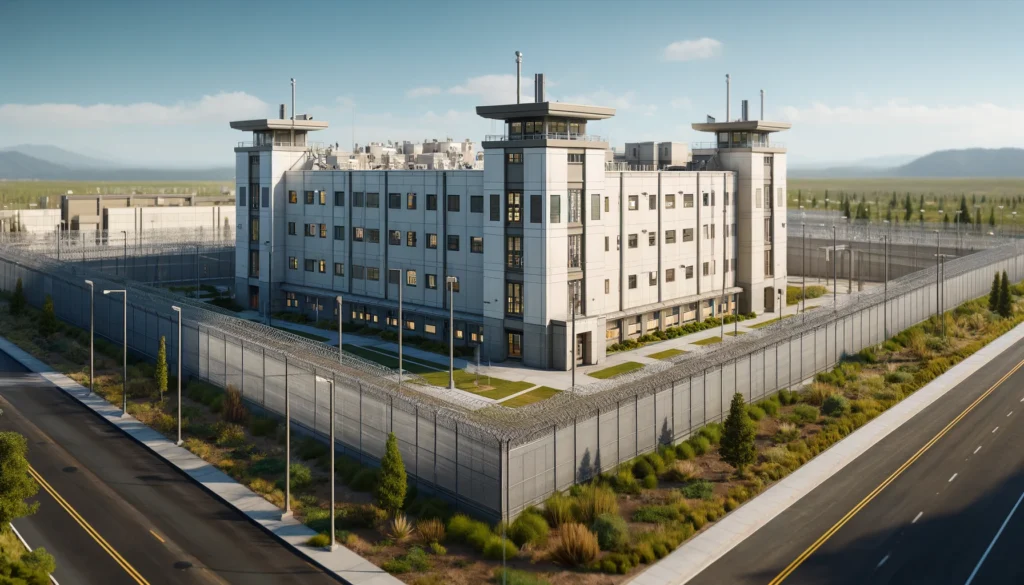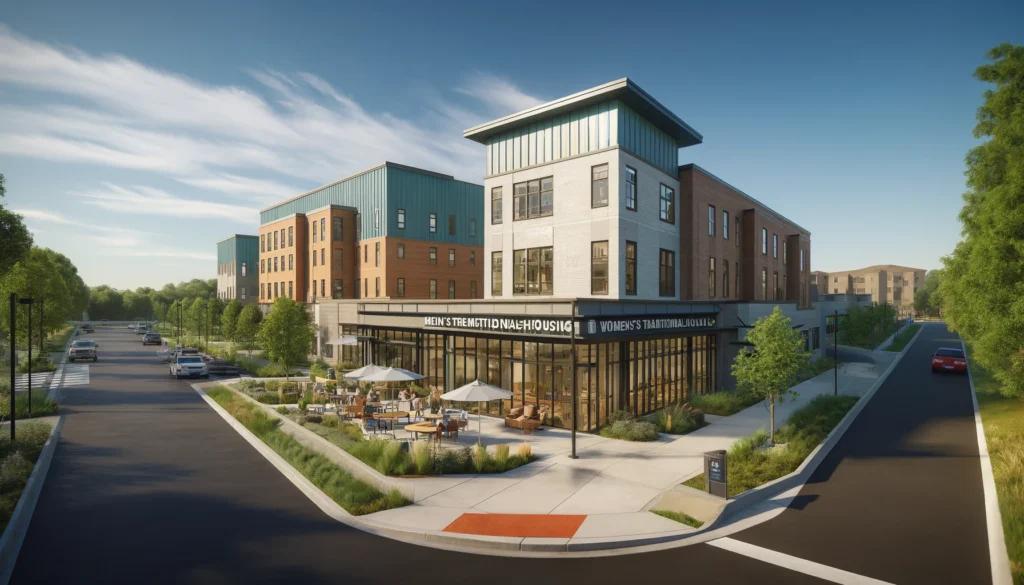San Mateo County Correctional Housing: Bridging the Gap for Men’s & Women’s Transitional Facilities
Table of Contents
- Introduction: San Mateo County Correctional Housing: Bridging the Gap for Men’s & Women’s Transitional Facilities
- Men’s & Women’s Transitional Facilities: A New Pathway to Reentry and Rehabilitation
- Understanding Transitional Housing
- The Importance of Transitional Facilities
- Services Offered at Transitional Facilities
- Addressing the Unique Needs of Women
- The Role of Transitional Facilities in Reducing Recidivism
- Frequently Asked Questions (FAQs)
- Conclusion: A New Beginning for Reentry
- Key Takeaways

Men’s & Women’s Transitional Facilities: A New Pathway to Reentry and Rehabilitation
Reentry into society after incarceration can be an overwhelming and challenging experience, filled with uncertainties and obstacles. The struggle to find stable housing, employment, and community support can be daunting. Transitional facilities offer a beacon of hope, guiding individuals from the correctional system back into the rhythm of daily life. In this article, we’ll delve into the intricacies of these programs, exploring how they operate, who they serve, and the positive impact they have on the reentry journey.
Understanding Transitional Housing
Transitional housing serves as a bridge between incarceration and reintegration into society. These facilities provide structured environments designed to help individuals make the transition from correctional centers to permanent housing. For both men and women, these programs offer not only a safe place to stay but also a range of supportive services aimed at addressing the unique challenges they face upon release.
The Importance of Transitional Facilities
One of the most significant hurdles for formerly incarcerated individuals is securing stable housing. Without a place to call home, the risk of reoffending and homelessness increases dramatically. Transitional facilities address this issue by offering safe and supportive environments where individuals can rebuild their lives. These programs are designed to foster stability, self-sufficiency, and accountability.
Services Offered at Transitional Facilities
The range of services offered at transitional facilities is extensive. From mental health counseling to job training and substance abuse programs, these facilities aim to provide comprehensive support for their clients. Vocational training is a crucial component, allowing participants to gain new skills and increase their employability. Case management helps individuals navigate the complexities of the reentry process, including court appearances and meetings with parole officers.
Transitional facilities also emphasize the importance of life skills, such as budgeting, time management, and effective communication. These skills are crucial for achieving self-sufficiency and avoiding the pitfalls that could lead to re-incarceration. Additionally, many programs offer faith-based services, which can be a source of comfort and guidance for those seeking spiritual support during their transition.
Informative List
- Transitional Housing Facilities: These centers provide shelter for both women and men who are reentering society after prison. Often working with the Department of Corrections and Rehabilitation, they offer a range of rehabilitative services to individuals recovering from addiction or adjusting to life outside the correctional system.
- Services Provided: Transitional facilities offer a comprehensive set of services, from job training and vocational programs to medical care and supervision. These programs help participants transition from homelessness to permanent housing, with some facilities located on Maple Street.
- Public Safety and Supervision: Safety is paramount, with ongoing monitoring and supervision to ensure participants comply with program rules. Therapeutic programs and supervision structures support public safety while fostering personal accountability and growth.
- Reentry Programs: Facilities often work with the Department of Corrections to facilitate reentry programs. These include case management, vocational programming, and ongoing participation in rehabilitative services. These programs are designed to ease the transition from prison to stable housing and employment.
- Specialized Programs: Many facilities provide targeted support for homeless women and those recovering from addiction. These programs offer specific counseling and therapeutic options to address unique needs, reducing the risk of recidivism and promoting community integration.

Addressing the Unique Needs of Women
Transitional facilities often cater to both men and women, but there are specific programs designed to address the unique needs of female offenders. Women’s transitional housing programs focus on issues like domestic violence, addiction, and childcare. These programs aim to provide a safe and supportive environment where women can recover and rebuild their lives.
Many women’s transitional facilities offer specialized services, such as counseling for domestic violence survivors and support for mothers reuniting with their children. This personalized approach helps women overcome the specific challenges they face and fosters a sense of community and empowerment.
The Role of Transitional Facilities in Reducing Recidivism
The ultimate goal of transitional facilities is to reduce recidivism and promote successful reintegration into society. By providing a stable environment and a comprehensive array of services, these programs give individuals a solid foundation on which to build their new lives. The supportive structure of these facilities helps participants develop accountability and self-discipline, which are critical factors in reducing the likelihood of reoffending.
Moreover, transitional facilities work closely with local communities, creating networks of support that extend beyond the walls of the facility. These networks include partnerships with employers, regional agencies, and other organizations that can provide additional resources for those in transition. This collaborative approach ensures that individuals have access to the tools they need to succeed in the long term.
Frequently Asked Questions (FAQs)
- What is transitional living? Transitional living refers to facilities that provide a supportive environment for individuals transitioning from prison to everyday life, offering both housing and rehabilitative services.
- Who can participate in a reentry program? Any former inmate who meets the criteria set by the facility, including those recommended by the Department of Corrections, can participate.
- How do transitional facilities promote public safety? By providing structured environments that monitor ex-offenders and offer rehabilitative services, these centers reduce the risk of reoffense, enhancing public safety.
- What support is available for the loved ones of those in transitional housing? Many facilities offer counseling and informational programs to help family members understand the reintegration process and how best to support their loved ones.
- Are there any programs specifically for women? Yes, there are specialized transitional housing programs designed to cater to the needs of women, mainly focusing on those recovering from domestic violence or addiction.
Conclusion: A New Beginning for Reentry
Transitional facilities play a critical role in helping men and women transition from correctional centers to permanent housing and stable employment. These programs provide a safe and supportive environment where individuals can receive the guidance and resources they need to improve their lives. With a focus on reducing recidivism and promoting successful reintegration, transitional facilities are paving the way for a brighter future for those reentering society.
By addressing the unique needs of each participant and offering a wide range of services, transitional facilities are more than just a temporary solution—they are a vital step toward a safer and more inclusive community. As these programs continue to expand and evolve, they will play an increasingly important role in helping formerly incarcerated individuals find their way back into society, offering hope, support, and a new beginning.
Key Takeaways
- Transitional Facilities are Essential: They provide critical support that helps formerly incarcerated individuals reintegrate into society successfully.
- Comprehensive Services: From mental health to employment training, these facilities offer a range of services designed to address the multifaceted needs of their clients.
- Safety and Stability: Transitional housing plays a crucial role in ensuring the safety of both the individuals in the program and the community at large.
- Specialized Programs for Women: Recognizing the unique challenges faced by women, many facilities offer specialized programs to help them transition smoothly and safely.
- Collaboration with Authorities: Effective transitional programs often work closely with the Department of Corrections and Rehabilitation to ensure that the reentry process is successful and compliant with all legal requirements.
